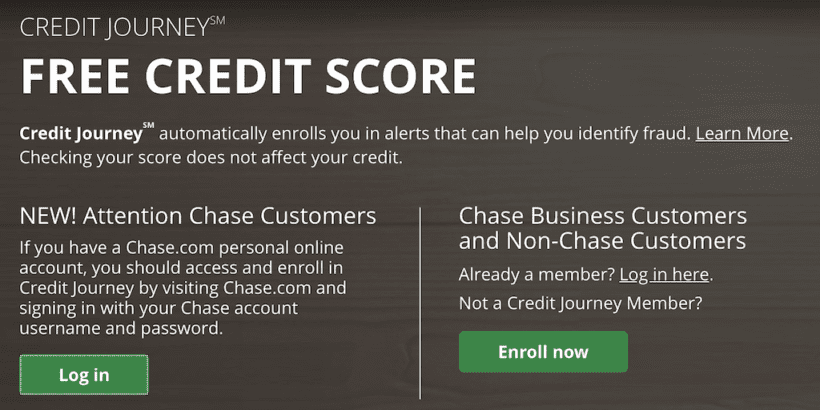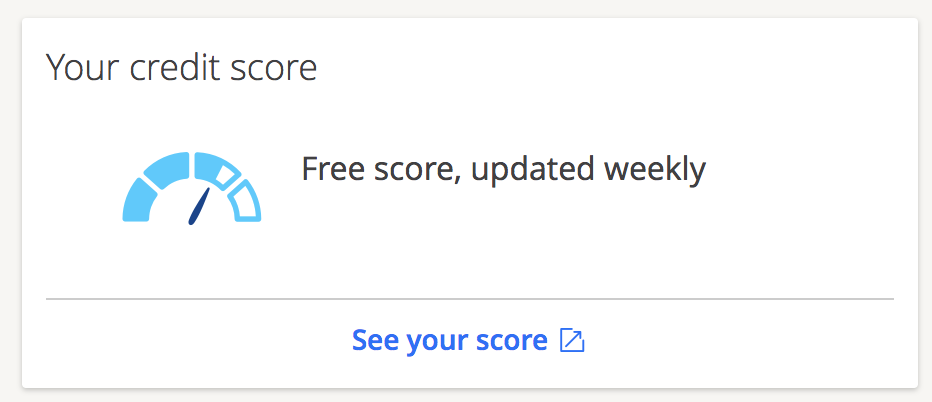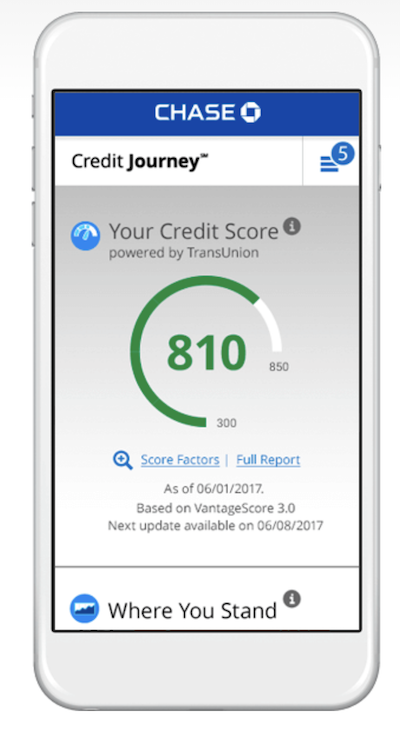Keeping up with your credit score and report is crucial given all of the different ways that your credit score can impact your daily life. Luckily, there’s a number of different ways that you can keep tabs on your credit score and report.
One way to do this is to utilize the free service known as Chase Credit Journey. In this article, I’ll tell you everything you need to know about Credit Journey, including why you may want to NOT use this service.
Table of Contents
What is Chase Credit Journey?
Chase Credit Journey is a free online tool you can use to check your credit score and monitor your credit report for changes. The service is provided by Chase but you don’t have to be a Chase customer to use it.
What type of credit score does it provide?
Chase Credit Journey does NOT provide you with a FICO score. Instead, it provides you with a TransUnion Vantage 3.0 score. This is the same type of credit score provided by Credit Karma.
Vantage calculates their credit scores differently from FICO (though there are a lot of similarities). Sometimes the scores can be the same or similar but in many cases, the credit score differences can be quite extreme for some people. For this reason, you want to use some caution before relying on the Credit Journey credit score.
It’s very possible that your FICO score could be higher or lower than your Vantage 3.0 score so I would advise to check your FICO score, since most lenders use a FICO score to determine your credit worthiness. Below, I’ll show you how you can check your FICO credit score.
Tip: Use WalletFlo for all your credit card needs. It’s free and will help you optimize your rewards and savings!
Where can I get accurate FICO credit scores?
There are a few ways that you can get a FICO score.
Many find it easy to sign-up for Experian.com and utilize that to get their FICO score (they offer a free 30-day trial membership). If you are just in it for the free score, make sure that you cancel your membership.
Sometimes MyFICO offers a free trial so be on the lookout for that.
You can also get one free credit report from each of the three major credit bureaus (TransUnion, Equifax, and Experian) once every 12 months from annualcreditreport.com. But note that that is usually just the report (though I’ve been given the score once in the past before).
What about Chase Slate cards?
The Chase Slate card is one of the best balance transfer cards that you can get. And this card also provides you with a free FICO score so it’s an option to consider for checking your FICO score for free.
This means that if you have the Chase Slate you can check your FICO score and your Vantage score at the same time and easily compare the differences between the two models.
How often will my score be updated?
Your score will be updated on a weekly basis but you can check it as often as possible. Also, checking your credit score will not result in a hard pull so it won’t impact your credit score at all.
How are Vantage scores calculated?
The VantageScore Model is pretty similar to the FICO model but it has some key differences. It uses the same FICO range of 300 to 850 for the score and stresses many of the same factors as FICO — it just gives them different weight and has some slightly different criteria for calculating them.
Here are the 3.0 factors according to Credit Karma:
- Payment history (about 40%)
- Age and type of credit (about 21%)
- Credit utilization (about 20%)
- Balances (about 11%)
- Recent credit (about 5%)
- Available credit (about 3%)
Here are the factors for the FICO model.
- Payment History (35%)
- Utilization (30%)
- Credit History (15%)
- New Credit (10%)
- Mixed Credit (10%)
So as you can see there is a lot of overlap between the two models. One of the key differences between the models is that closed accounts continue to age for FICO models but they don’t for Vantage models. This can result in huge differences in account history for folks like me who have opened and closed quite a few cards over the past few years.
Another big difference is that the Vantage models will combine related inquiries within a 14 day window. Meanwhile, newer FICO versions count multiple credit inquiries of the same type within a 45-day period as a single inquiry.
Therefore, if it took you 3 1/2 weeks weeks to find an auto loan and you had multiple inquiries within those weeks, that could have had a bigger impact on your Vantage score versus your FICO score.
So Chase Credit Journey can be a nice way to see where your credit score stands generally but given the differences in the formulas, I would be hesitant to rely on it for any major credit decisions.
How to sign-up for Chase Journey
- You can visit this link right here to enroll in Chase Journey
If you’re not a Chase customer, you’ll need to input your personal details, choose a username, and set your security questions and answers. After that, you’ll need to verify your identity
If you’re an existing Chase customer, you simply need to log-in using your Chase credentials. You’ll be asked to verify your email address but after that you’ll be able to log-in to your main dashboard area and click on an area to check your credit score on the right of your screen that looks like the image below.
Note: If you have a Chase Business account you will not be able to log in to Credit Journey through your Chase account.
Once you pull up Chase Credit Journey, you can view your credit score and an overview of your credit score. If you want to view a more in-depth look at your score then click on the “Credit Report” tab, which will then allow you to view all of your accounts.
Credit Journey disputes
There’s even a dispute center where you can follow links to initiate disputes for errors on your TransUnion, Equifax, and Experian reports.
Here’s what they recommend for disputing errors:
Step 1: Contact the creditor associated with the account
- You should begin the dispute process by contacting the creditor responsible for the inaccuracy.
- You can find the contact information for each of your creditors on this credit report.
- Your financial institutions will be able to correct most minor errors over the phone and will prevent them from recurring.
Step 2: Contact each of the credit reporting agencies
You can dispute online with TransUnion.
You can also file a dispute via mail.
TransUnion
2 Baldwin Place
P.O. Box 2000
Chester, PA 19022
You can dispute certain items online with Equifax, if you have an active Equifax credit report file number.
You can also file a dispute with Equifax via mail.
Equifax
P.O. Box 740241
Atlanta, GA 30374-0241
You can dispute online with Experian.
Credit Journey score simulator
The tool also has a score simulator that allows you to plug in variables to see how your score might be impacted in the future. For example, you can see what the effect would be if you had a credit card completely paid off. This isn’t a sure thing, however, because there are many different variables that go into calculating your credit score. Each factor can be impacted by many different factors so take the results with a grain of salt.
Credit Journey Alerts
Credit Journey will alert you to changes to your credit report that could indicate potential signs of identity theft, fraud or inaccuracies that could damage your score. These will be things like new accounts, hard inquiries, address changes, and other relevant changes.
You should be notified if they find anything but you can also check the Alerts tab when you log-in to see if there are any findings.
Credit Journey App?
While there is no Credit Journey App, you can view Chase Credit Journey in the Chase App. This means that you’ll need to be a Chase customer in order to take advantage of this feature.
How to unenroll
- Click here to unenroll.
Final word
Overall, Chase Credit Journey can be a useful tool to see where your credit score is but it’s not a FICO score so you don’t want to rely on this score for the majority of lenders since they don’t use the Vantage model. Since it’s free, there’s no harm in checking it out and perhaps using it monitor your credit report for any unexpected changes, though.
Daniel Gillaspia is the Founder of UponArriving.com and the credit card app, WalletFlo. He is a former attorney turned travel expert covering destinations along with TSA, airline, and hotel policies. Since 2014, his content has been featured in publications such as National Geographic, Smithsonian Magazine, and CNBC. Read my bio.



